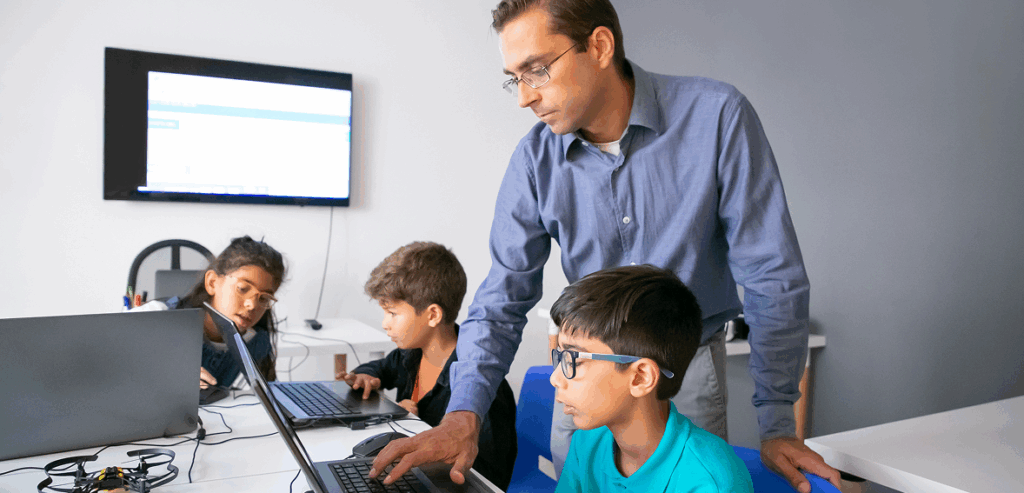
By Marie Gaynor August 27, 2025
Running a daycare today requires more than just a love for children. Modern centers must balance nurturing care with strict compliance, ensuring safety, trust, and sustainability. Parents place immense responsibility in the hands of caregivers, making it crucial that daycares manage operations with both heart and accountability. Regulations, health guidelines, and evolving parental expectations shape the environment in which childcare providers operate. At the same time, maintaining warmth, creativity, and emotional support for children cannot be overlooked.
This balancing act demands smarter management strategies. Daycares need systems that simplify compliance without taking away from the joy of care. Smarter planning, modern tools, and well-trained staff are key to creating an environment that supports children’s growth while satisfying regulatory obligations. The following sections explore how daycares can effectively blend care and compliance to meet the expectations of today’s families.
Understanding the Importance of Compliance in Daycares

Compliance in daycare settings covers health, safety, staffing ratios, food handling, and emergency preparedness. Regulations are in place to protect children, but they also ensure parents feel confident leaving their children in a center’s care. Meeting these requirements is not optional; failing to do so can result in fines, closures, or loss of trust.
However, compliance often feels like a heavy administrative task. Paperwork, inspections, and reporting can consume valuable time that staff would prefer to spend with children. Smarter management involves creating systems where compliance tasks are integrated seamlessly into daily routines. When recordkeeping, attendance logs, and safety checks are simplified, staff can focus more on care without fear of missing a regulation. This integration builds a culture where compliance is seen as a natural extension of good childcare rather than a separate burden.
The Human Side of Care in a Regulatory Environment
While compliance sets boundaries, care defines the soul of a daycare. Children thrive in environments where they feel loved, supported, and free to explore. Regulations cannot dictate warmth or emotional connection, yet these elements are central to quality childcare. Providers must therefore find ways to ensure compliance does not strip away the personal touches that make children feel at home.
Balancing care and compliance requires intentional planning. For example, ensuring proper staff-to-child ratios not only meets regulations but also creates conditions for meaningful interactions. Proper scheduling and well-distributed workloads allow teachers to stay engaged and patient rather than burned out. Parents notice the difference when staff can give their full attention to children instead of being weighed down by endless administrative tasks. In this way, compliance supports care rather than competes with it.
Smarter Use of Technology in Daycare Management

Technology has become a powerful ally in daycare management. Digital attendance tracking, electronic health records, and automated reporting systems reduce human error and save time. For instance, digital sign-in systems provide accurate logs for compliance checks while also giving parents peace of mind that their child’s presence is recorded securely.
Modern daycare management software can integrate billing, staff scheduling, parent communication, and compliance documentation into a single platform. This reduces the need for multiple manual processes and helps administrators track requirements with minimal stress. By automating routine tasks, staff can focus on what they do best—caring for children. Parents also benefit from real-time updates, transparent records, and smoother communication channels. In essence, smarter technology bridges the gap between operational efficiency and genuine childcare.
Staff Training as a Foundation for Balance
Even the most advanced tools cannot replace skilled and compassionate caregivers. Staff training plays a vital role in ensuring compliance and quality care go hand in hand. Training should extend beyond regulatory requirements to include emotional intelligence, child development, and effective communication with families.
Well-trained staff are more confident in their ability to meet both compliance standards and children’s needs. For example, knowing proper emergency response procedures ensures staff can act swiftly in crises, while training in early childhood education enables them to nurture curiosity and social skills. Regular workshops, refreshers, and scenario-based exercises keep knowledge current and help staff balance structure with empathy. A culture of continuous learning encourages employees to embrace compliance as a way to enhance their caregiving rather than as a restrictive checklist.
Creating Transparent Communication with Parents
Parents want assurance that their children are safe, cared for, and learning. Transparency builds this trust. Sharing compliance-related updates—such as health policies, safety measures, and staff qualifications—can strengthen parent confidence. At the same time, open communication about daily activities, progress, and concerns helps parents feel more connected to their child’s experience.
Smarter management tools enable real-time parent communication. Daily reports, photos, or notes sent digitally allow families to see how compliance translates into safety and care. When parents know their child is accounted for, fed nutritious meals, and engaged in enriching activities, trust deepens. Transparency ensures that compliance is not hidden behind paperwork but becomes part of the center’s story of reliability and care.
Financial Management and Compliance Balance

Running a daycare involves tight budgets, and compliance requirements can sometimes feel costly. From safety equipment to specialized staff training, financial planning must account for these obligations. However, smarter financial management turns compliance into a long-term investment rather than a short-term burden.
Software solutions that combine billing and compliance tracking reduce administrative overhead. Clear fee structures, timely invoicing, and transparent records keep parents satisfied while ensuring the center meets financial regulations. By aligning budgeting with compliance priorities, daycare leaders can make sustainable choices—like investing in safe equipment or eco-friendly cleaning supplies—that support both operational needs and parent expectations. This balance ensures centers remain financially viable without compromising safety or quality care.
Building a Culture of Safety and Responsibility
Compliance is most effective when it becomes part of the daycare’s culture. Staff should not see it as an external checklist but as an internal commitment to children’s wellbeing. Creating this culture requires leadership that models responsibility, consistency, and care in every decision.
Daily practices like safety drills, hygiene routines, and regular inspections help normalize compliance. When children see these practices integrated seamlessly into their environment, they learn valuable lessons about responsibility and care for others. A safety-first culture reduces accidents, reassures parents, and ensures that compliance is not an afterthought but a daily habit. Smarter management creates systems where this culture thrives naturally without excessive strain on staff.
Managing Staff Wellbeing to Prevent Burnout

The demands of balancing care and compliance can overwhelm daycare staff if not managed wisely. Burnout reduces quality of care, increases turnover, and makes compliance more difficult to uphold. Smarter management includes prioritizing staff wellbeing alongside child safety.
Effective scheduling ensures fair workloads, rest periods, and proper staff-to-child ratios. Providing mental health support, professional recognition, and opportunities for growth keeps staff motivated. When employees feel valued, they are more likely to handle compliance tasks with diligence and care for children with patience and enthusiasm. By investing in staff wellbeing, daycare leaders build resilient teams that can sustain the balance between compliance and care over the long term.
Designing Environments That Support Both Care and Compliance
Physical spaces in daycares must be safe, functional, and nurturing. Compliance requires secure layouts, childproofing, and emergency access, while care requires warmth, creativity, and comfort. Balancing these demands means designing environments where safety measures enhance rather than detract from learning and play.
For example, child-sized furniture meets compliance by reducing accident risks while also encouraging independence. Clearly labeled storage areas help with both regulatory inspections and teaching children organization skills. Outdoor spaces designed with safe play zones give children freedom while satisfying safety codes. Thoughtful design shows that care and compliance can work together to create enriching spaces. Smarter management means evaluating environments regularly to ensure they adapt to evolving needs and regulations.
The Future of Smarter Daycare Management

The future of daycare management lies in integrating compliance and care through innovation. Technology will continue to streamline administrative tasks, while growing awareness of mental health will shape training and staff support. Parents will expect more transparency, and regulators may introduce stricter standards.
Smarter management will require adaptability. Daycares must remain open to new tools, updated regulations, and changing family expectations. Leaders who embrace these shifts will create centers where compliance and care are not in conflict but mutually reinforcing. The future belongs to daycares that see compliance not as a burden but as a framework for creating safer, more enriching environments for children.
Conclusion
Balancing care and compliance in modern daycares is both a challenge and an opportunity. While regulations can feel demanding, they provide the foundation for safety and trust. Care, on the other hand, brings warmth and human connection to children’s daily lives. Smarter management lies in weaving these two elements together through technology, training, transparent communication, financial planning, and supportive environments. When compliance is integrated into daily routines, staff are empowered, parents are reassured, and children thrive. The future of daycares will depend on leaders who embrace smarter strategies, ensuring that nurturing care and rigorous compliance work in harmony. In this way, daycares can remain trusted pillars for families while preparing the next generation for a safe and enriching world.